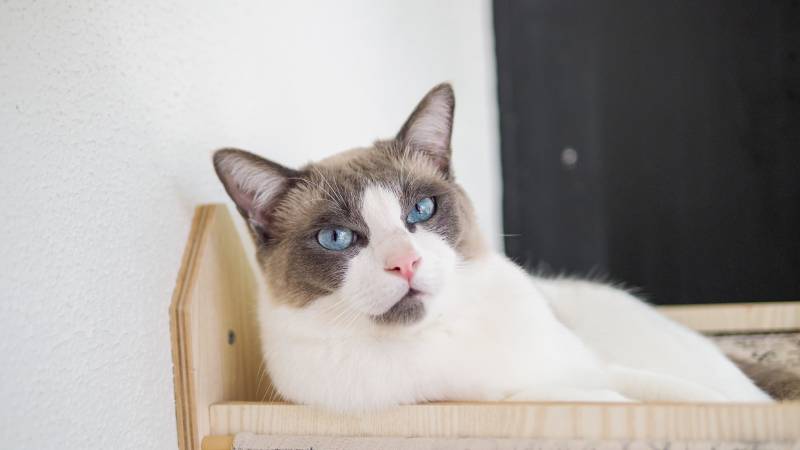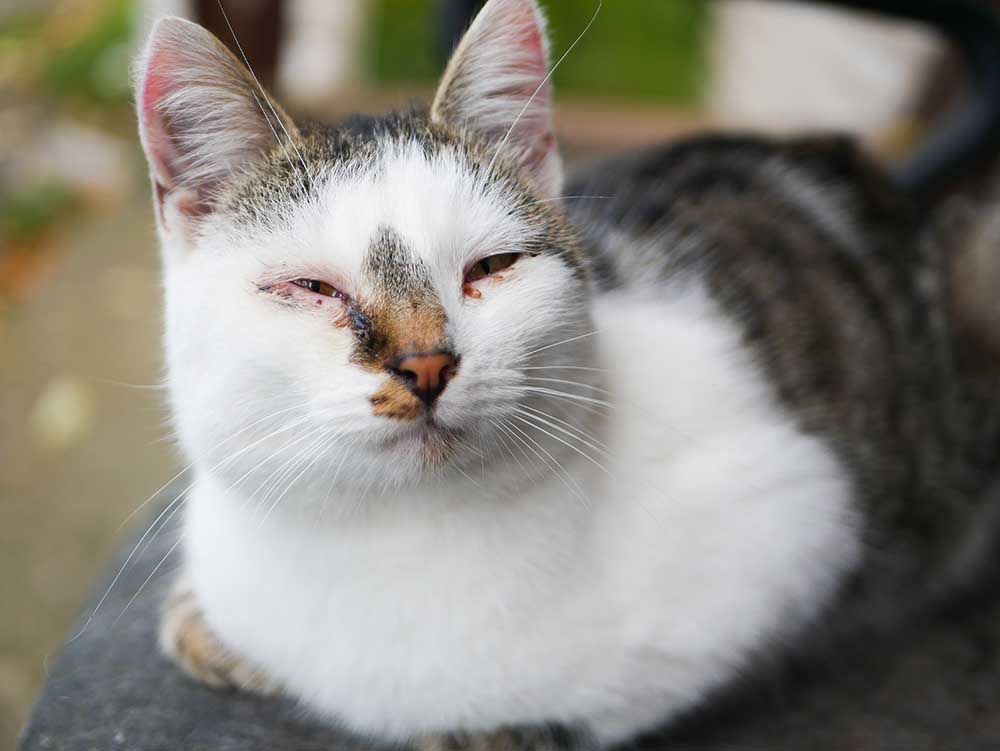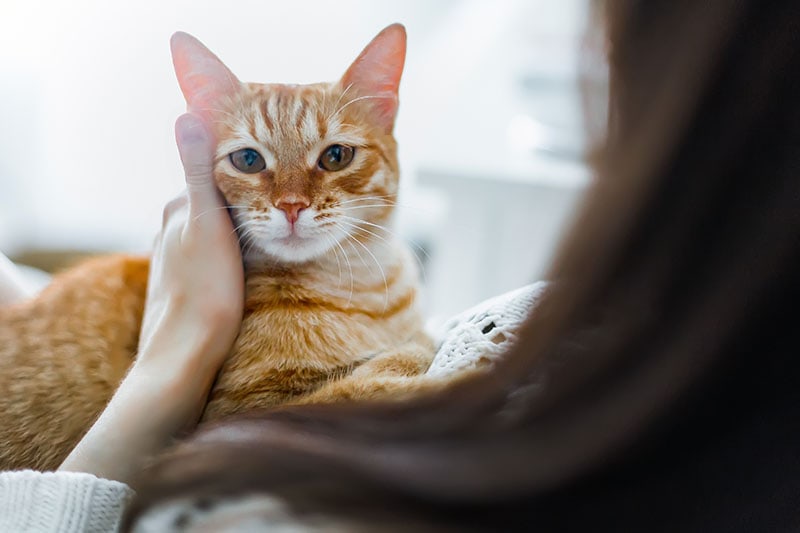VET APPROVED

The information is current and up-to-date in accordance with the latest veterinarian research.
Learn more »Click to Skip Ahead
Cats are known for the impressively long and numerous whiskers that adorn their face. Though whiskers are found elsewhere on a cat’s body as well, they are most concentrated on the face. Being sensitive to bends and environmental stimuli, whiskers help a cat better assess their surroundings.
It’s believed that overstimulation of a cat’s whiskers, especially in a negative way, can cause distress for your pet. This form of negative stimulation is known as whisker fatigue or, in some instances, whisker stress.
To learn more about whisker fatigue in cats, read on. This article explains what it is and how to assess your cat for whisker fatigue. Just by making a few small changes in your cat’s life, you may be able to offer your pet a better quality of life.

The Function of Whiskers
To understand whisker fatigue, first, you need to understand the function of whiskers. Whiskers, also known as vibrissae, are specialized hairs. Whiskers act like sensors, and if they touch a surface, bend, or vibrate, the nerve endings on the base of the whiskers can sense these changes.
As a result, whiskers help cats to orient themselves around their environment. For example, whiskers help cats move around in dark locations or estimate if they can fit through a tight squeeze. Whiskers also play a role in several of a feline’s facial expressions.
Because whiskers are sensitive to stimuli, it is thought that if they are overly or negatively stimulated, it may lead to stress for your cat.
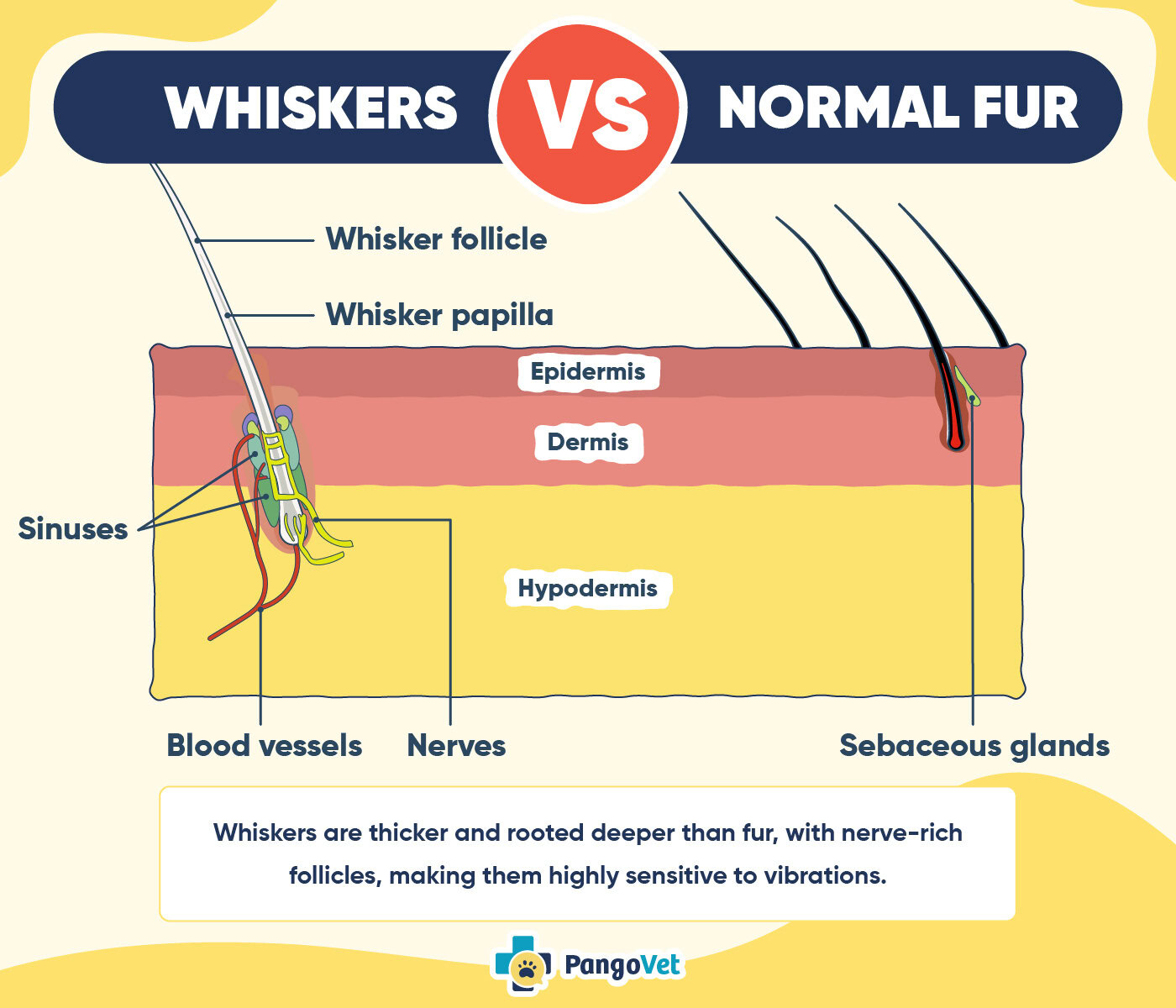
Whisker Fatigue Explained
Cats can protract and retract their whiskers; however, they cannot turn on or off the sensory experiences from their whiskers. If too much information is being sent to the nerves at the base of your cat’s whiskers, your cat may become stressed out from the information overload. This overload of information is essentially whisker fatigue.
Whisker fatigue is not whenever the cat feels tired, or the whiskers can’t perform their job. On the contrary, whisker fatigue happens whenever whiskers do their job so well that the cat is overwhelmed by the bombardment of messages.
Causes
Overstimulation is the main cause of whisker fatigue. The most common cause for this overstimulation is during feeding or drinking time. Many cat bowls are small and not large enough for the cat’s whiskers to fit into. Cats may get bombarded with whisker fatigue when eating and drinking simply because of the size of the bowl.
There are other potential causes for whisker fatigue, but food and water bowls are by far the most common since your cat can’t avoid eating and drinking.
Prevention
If you’re looking to prevent whisker fatigue for your cat, you’ll first want to invest in great food and water bowls. Wide-brimmed, shallow dish options are going to be your best bet. Slightly elevated bowls also promote better digestion and overall comfort while eating and drinking. Additionally, you can avoid touching or petting their whiskers so your cat doesn’t become overstimulated.
Our Favorite Products
| Image | Product | Details | |
|---|---|---|---|
Best Cat Bowl
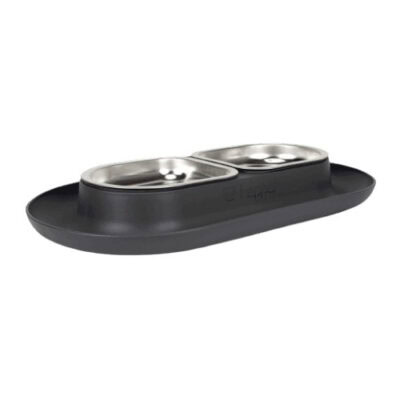
|
Hepper NomNom Cat Bowl |
|
CHECK PRICE |
Best Water Fountain
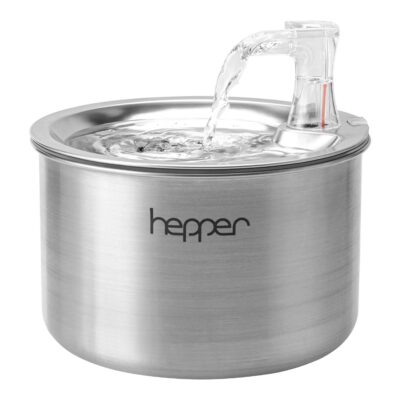 |
Hepper Stainless Steel Cat Water Fountain |
|
CHECK PRICE |
At PangoVet, we've admired Hepper for many years, and decided to take a controlling ownership interest so that we could benefit from the outstanding designs of this cool cat company!
Ensuring your cat is comfortable during meal time while encouraging them to drink enough water can be a tough task for cat parents. Luckily, we've taken the guesswork out of it and tried a few premium products we highly recommend. Our favorite cat bowl is the Hepper NomNom Cat Bowl. Two elevated stainless steel, whisker-friendly dishes sit secured to a moat-style base, designed to keep your cat comfortable while they eat and your floors free of mess. The Hepper Stainless Steel Cat Water Fountain is our top choice for water fountains. Triple filtration, adjustable water flow speed, and an ultra-quiet design make this an obvious choice and a major hit with our cats. As an added bonus, this pair is modern and seamlessly fits in with all homes, unlike unsightly traditional bowls.
Debate
Though veterinarians, animal behaviorists, and scientists do tend to agree that overly stimulating or interfering with a cat’s whiskers (such as poking them over and over) can lead to distress, there is very little research to prove its existence or its negative effects in pet cats.
The phrase “whisker fatigue” is solely found in opinion-based literature or anecdotal claims. There is no distinct sign of whisker fatigue. The signs of whisker fatigue can be seen with other ailments as well. Therefore, it is important to consult your veterinarian anytime you think your cat has whisker fatigue because it might be another health issue.

Signs of Whisker Fatigue
Whisker fatigue can be difficult to spot. As explained above, there is no distinction between the possible signs of whisker fatigue and other health issues that may impact a cat’s eating behavior.
The easiest time to observe your cat if you suspect whisker fatigue is during mealtime. If your cat is pacing back and forth in front of their food bowl or doing other things that signal stress, your cat may be experiencing whisker fatigue while eating and drinking.
- Refusal to eat or drink despite being hungry
- Hesitancy in eating or drinking
- Pacing in front of bowls
- Trying to pull food out of the bowl before eating it
- Acting aggressively when food is served in a bowl
If your cat demonstrates any of these signs, they may be experiencing whisker fatigue. That being said, as mentioned earlier, some of these signs are signs of other serious illnesses. Taking your cat to the vet to ensure that no other illnesses are responsible for your cat’s unusual behavior is imperative. Please note that you shouldn’t take this lightly, as cats can quickly become extremely debilitated if they refuse to eat.
How to Handle Whisker Fatigue
If your vet ascertains that your cat has no underlying health issue, then you could assume that your cat likely doesn’t like their food dish.
Because whisker fatigue most often happens during the eating process, the easiest way to fight whisker fatigue is to provide your cat with a safe eating and drinking experience.
Cat Bowl
Instead of feeding your cat food in a bowl, try feeding your cat on a plate or a wider bowl. Such a dish may help improve your cat’s mood at feeding time. If your cat is a messy eater, look for an extra-large bowl, though a plate is preferable. There are also shallow dish options that cater to the specific needs of cats you can opt for.
Experimental studies on cats showed no significant differences in eating habits involving different-sized bowls. However, it was shown that cats generally prefer wider eating dishes over narrower ones 1.
Water Bowl or Fountain
Unfortunately, you cannot feed your cat water from a plate. So, opt for an extra-large bowl that is safe for cat whiskers or a water fountain. Cats are often drawn to flowing water, and a fountain may even encourage your cat to drink a little more.
Another way to handle whisker fatigue is to take a closer look at the possibility that your cat doesn’t like their food. Many cats seem to have a preference for soft, highly palatable foods over dry kibble. If your cat is on a kibble diet, modifying or changing their diet might be the fix for their enjoyable mealtime antics. Consider talking to your vet about a dietary transition for your pet to see if it helps improve their mood during mealtime.


Final Thoughts
Though whisker fatigue isn’t a topic of clinical scientific interest and studies, it is nonetheless plausible that negatively overstimulating a cat’s whiskers might lead to stress, which, in turn, could lead to whisker fatigue. Many times, a narrow food bowl might be the culprit when it comes to your cat’s whisker woes.
There are no telltale signs of whisker fatigue; the signs of whisker fatigue may also be caused by other ailments. Taking your cat to the vet can ensure that your cat is getting the care they need. If your cat is free of medical issues and gets a clean bill of health from your veterinarian, you may want to experiment with different types of food bowls or food textures for your cat.
Featured Image Credit: atiger, Shutterstock
